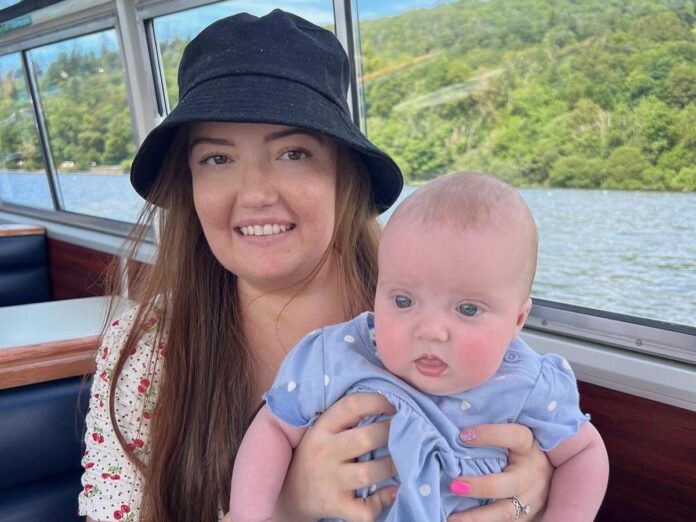A new mother was given just two years to live after receiving a ‘shock’ brain tumour diagnosis during pregnancy.Laura Elizabeth Mahon, 30, was diagnosed with a glioblastoma last year, while 20 weeks pregnant.She has since been through chemotherapy and has been told her tumour is stable – but the prognosis is still bleak.This tumour type, often known as GBM, generally has a survival time of between 12 and 18 months, according to Brain Tumour Research.Laura, from St Helens, Merseyside, first realised something was wrong in September last year when she woke up at home and couldn’t move her toes.She says she didn’t think too much about it as she was pregnant and tired but, the next day, she could no longer move her right leg and was struggling to walk.She then went to her GP, who thought her baby was pressing against a nerve. But an MRI scan revealed she had a brain tumour.Laura said: ‘They told me it had more than likely been there for years and had now started growing.’It was such a shock. I was only 29 and didn’t think something like this could happen to me.’She and husband Danny, 29, then made the ‘toughest decision of their lives’ when Laura’s condition worsened. They opted to bring their daughter, Sienna, into the world at 30 weeks.Weighing only 3.4lbs at birth on 30 November, the baby was taken to the neonatal ward and placed in an incubator. Sienna developed a collapsed lung so was transferred to Royal Oldham Hospital to receive specialised care.Despite not being well enough, Laura discharged herself from Warrington Hospital to be with her daughter.Laura Mahon after her operationAn MRI scan on 9 December then revealed Laura’s tumour had nearly doubled in size. She was told it was inoperable because it was on her motor cortex and could not be removed safely.And less than two weeks later, on 22 December, Laura received the results of her biopsy.She said: ‘Being told at 29 years old that you have inoperable stage 4 brain cancer and just two years to live is something you can never prepare yourself for. Hearing that said out loud was a moment I’ll never forget.’Laura has just completed six months of chemotherapy and her most recent MRI scan showed the tumour was stable and had shrunk.Feeling ‘relieved’, she and Danny are now looking forward to celebrating Sienna’s first birthday later this month.She said: ‘It will be so lovely. Sienna is doing great, and she has just started nursery which she’s loving. It’s so nice to see her developing, and she’s now trying to walk.”I see others with GBMs who manage to live longer, so I am clinging to the idea that I might be one of those people. I’m fighting as hard as I can and I’m staying strong for my family.’Laura is now working alongside the charity Brain Tumour Research. She also praised EastEnders for featuring a storyline similar to her own as likely to help raise awareness of the condition.Major character Lola Pearce revealed her own GBM diagnosis on the soap this year.Laura said: ‘It’s sad to watch what’s happening to Lola because it’s so close to my story.’It all came flooding back when Lola was told she had a brain tumour, how it was such a massive shock, and then the sitting in hospital and waiting for results.’Danielle Harold plays the role so well, it’s scarily accurate. I talk about the storyline with my husband, Danny, and my parents.’My mum got upset while watching it, but it’s so important to raise awareness because people don’t understand how quickly brain tumours change people’s lives.’Sue Castle-Smith, from Brain Tumour Research, said: ‘We are grateful to EastEnders for helping to raise awareness of brain tumours.’Lola’s story is all too familiar to thousands of families. Brain tumours are indiscriminate and can affect anyone at any age, they kill more children and adults under the age of 40 than any other cancer.’Increased awareness is vital as we campaign for the government and the larger cancer charities to invest more to improve outcomes for patients and, ultimately, to find a cure.’
New mother given two years to live after ‘shock’ brain tumour diagnosis
Sourceindependent.co.uk
RELATED ARTICLES


